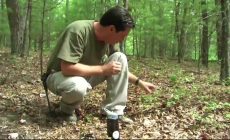
If you own a beautiful backyard or a garden you have invested a lot of time and effort into, then you probably have a verdant lawn as well, right? For many homeowners, the answer is, unfortunately, “no,” because maintaining a lawn healthy and green is hard.
In fact, a poorly upkept lawn could turn into an eyesore once it starts turning brown from extensive sun exposure and not enough water. Luckily, there are at least 9 ways in which you can cost-effectively maintain your lawn verdant throughout the season.
Mowing 1-on-1
One of the most important aspects of the health of your grass is the length to which you cut it, i.e. mow it. In general, grass blades are cut to two-thirds of their height. You really shouldn’t cut more than one-third of a blade’s height in a single mowing.
On the other side, there are no strict rules on how many times annually or a particular season the lawn requires mowing. It all depends on the weather conditions at the time. Usually, the grass will grow slower during the cold season, so the lawn will be mowed less frequently.
In the summertime, when the ground gets plenty of water and sun, you’ll have to mow the lawn more often but don’t forget to trim only a third of the blades’ height. Any more than that and your lawn will start to die out.
Taking out weeds
The key to cultivating a healthy green lawn is the creation of the right environmental conditions. However, invasive plant species, such as weeds will find your yard inviting as well. Weeds suck the water and nutrients from the soil and kill the grass in the process; not to mention the fact they are an eyesore.
Exterminating weeds requires the use of a foolproof method: excising them from the ground together with their root system is the only way to stop weeds from growing ever again. This can be done by hand (be sure to don gardening gloves) or you can use a weeder, a tool that eases the entire process.
Before you start plucking the weeds out, you should apply low-toxicity chemicals that weaken the root system of weeds so they can be pulled out in a single go. A useful tactic for stopping the weeds from growing in the first place is to use mulch in places where the ground is bare, such as tree bases or the edge of the lawn.
Resolving drainage issues early on

All plants rely on two basic factors for growth: sunlight and the proper amount of water. Grass is no different in this aspect, as lawn drainage is among the top priorities for green thumbs. A lawn requires excellent drainage so pools of water are prevented from forming after every rain shower. If you have ever seen a sports field crisscrossed with puddles, then you definitely know what we are talking about.
Landscaping the yard involves taking active care of soil permeability to deal with any drainage issues early on, i.e. prevent them before they occur. Soil types with high clay content stop the ground from taking in water evenly, causing brown patches to form across the lawn.
Another possible problem with drainage are thick sections of thatch right on the surface of the lawn. Additionally, dense root systems of surrounding trees and soil compaction around them can decrease the lawn’s drainage capability. Planting trees with shallow root systems help diminish this problem.
Getting rid of moss
Apart from weeds, moss is yet another invasive plant species with the potential of ruining your beautiful lawn. Since moss is a non-flowering plant, you will often find it in the sections of the lawn that are in the shade and which are moist all the time. Low-quality turf can also increase the chances of moss appearing on the lawn.
Moss isn’t as detrimental as weeds but it will definitely slow the growth of grass, supplanting it over time. Luckily, getting rid of moss is fairly easy, as all you need to do is thwart the conditions in which it thrives. Reduce the shade, dig out the soil full of clay, improve drainage, actively combat drought, and restraint from over-quenching the lawn.
The right tools for the job
Another area where moss will cause problems for you is the driveway and the paths, i.e. every concrete or paved surface. When wet, moss is a slip hazard, so you need to remove it efficiently. In this sense, a high pressure washer that you use to clean your car will come in handy.
There is a wide variety of tools you should use for maintaining your backyard. We’ve already mentioned the weeder but the land mower is perhaps the most-used pieces of equipment used for lawn maintenance. Be sure to invest good money in the tools and equipment, as they will make maintenance a walk in the park.
Landscaping the backyard

One of the most useful gardening tools are pruning shears. They are used to trim and model bushes and hedges that are planted along the edge of the lawn, preventing soil erosion, as well as creating a physical barrier. The green you establish around your property should look nice in addition to stopping unwanted visitors.
As far as the lawn itself is concerned, you can use the aforementioned lawnmower to create various patterns. These don’t have to be as elaborate as the ones at sporting venues, as merely mowing in opposite directions creates a wonderful tartan pattern.
Then, you can use pruning shears to trim the edges and borders after you’re done mowing. This is going to depend on whether the lawn ends with a fence or it opens onto a sidewalk. The latter scenario offers many more possibilities to come up with elaborate patterns to decorate the very edge of your lawn.
The importance of raking regularly
A negative side to planting any type of trees in the garden is the pileup of dead leaves that cover the lawn with the onset of fall. Contrary to popular opinion, there exist types of organic waste that are not beneficial to grass as a plant species, such as thatch and root stems.
For instance, in order to improve drainage, thatch in particular should be raked all year round. Unlike weeding, getting rid of thatch is as easy as removing moss if you use a garden rake.
As far as “good” organic waste is concerned, growing an organic vegetable garden is highly desirable since you turn household waste into compost. Finally, all the organic waste you remove from the surface of the lawn helps sunlight reach the grass’ root system, thus preventing water from evaporating too fast.
Correctly timing the watering of the lawn
Speaking of water, the question when the best time to water the lawn is, comes naturally. It is fairly obvious when the lawn is in dire need of H2O: the blades will start changing color from a healthy dark green to a brownish color associated with rotting in other plants as well.
By the time blades turn yellow and brown, it is too late to act and save the lawn. Another method of deterring the state of your lawn is, involves stepping over the blades of grass and observing how fast they spring back into their natural upright position. If the blades remain on the ground, then they are in poor health and need watering before anything else.
The first rule of watering advises gardeners to avoid watering the lawn when the ground is wet from rainfall the day before, which seems like an obvious thing to avoid.
Furthermore, you should restrain from watering the lawn in the late afternoon or after dark. The earth simply won’t get a chance to imbibe the water before sundown that day. The best time to water the lawn is early morning. This way, the sun will have plenty of time to evaporate excess water, with the ground still getting enough nutrients.
The benefits of aerating
Apart from sunlight and water, your lawn should have enough oxygen as well, although this might seem odd to novice gardeners. Namely, burrowing tiny holes allows both water and air to penetrate deeper into the root system than they normally wood. This depth is especially important in the case of air.
A well-aerated lawn receives more nutrients from the ground beneath and the air above. Aerating is essential for patches of land located in regions plagued by drought and waterlogging.
To aerate properly, you need a garden fork or a specifically-designed slipper that features spikes at the bottom (it looks a lot like a soccer cleat). The spikes are placed at a predetermined distance from one another and their length differs as well. This enables the “spiked” slipper to reach various depths when aerating.
Unlike watering, aerating is performed less often: just one in two or three years. However, if patches of the lawn are in desperate need of aerating, you should perform it more often.
Every green thumb will tell you that the amount of work that goes into maintaining a healthily green lawn is massive. However, if aerate, water, and upkeep the awn properly and regularly, you will have the prettiest yard on the block.
About the author
Sarah Jessica Smith is a young blogger from Sydney. She is in love with life and all the things that can make her daily routine easier. She loves to write about home improvement, lifestyle, and all the small things that make life such a great adventure.
If you don’t want to do all of these on your own, check affordable lawn services from Sacramento.





















Leave a Reply
Your email address will not be published. Required fields are marked (required)